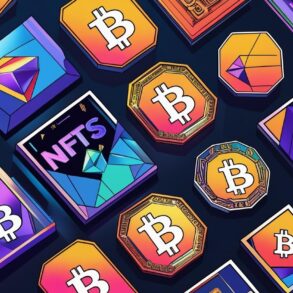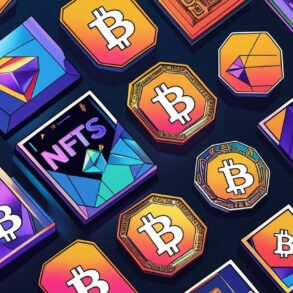Justin Sun, Chinese entrepreneur in the crypto sector, has purchased the iconic “banana” by Cattelan for 5.2 million dollars. The choice, symbolic and controversial, combines contemporary art, pop culture, and blockchain technology.
Let’s see all the details in this article.
The purchase by Justin Sun of Cattelan’s artwork and the connection between art, meme, and crypto
The purchase of “Comedian,” the famous banana taped to the wall with duct tape created by the Italian artist Maurizio Cattelan, has once again brought Justin Sun to the center of media attention.
This 34-year-old Chinese entrepreneur, known for being a prominent figure in the crypto sector, spent 5.2 million dollars to win the artwork at Sotheby’s auction, sparking discussion in the world of art and digital finance.
As we know, Sun is the founder of TRON, a blockchain platform dedicated to the decentralization of digital content, and the stablecoin USDD, pegged to the value of the US dollar.
Furthermore, it owns the BitTorrent protocol, famous for peer-to-peer file sharing, and the Poloniex exchange.
With an estimated wealth of at least 1.43 billion dollars, Sun is considered a visionary innovator, even though his career has not been without controversy.
Accused of market manipulation by the United States Securities and Exchange Commission (SEC), he is under investigation for alleged violations of financial laws.
In any case, Justin Sun’s decision to purchase “Comedian” was not random. According to what was stated in a post on X (formerly Twitter), Sun considers Cattelan’s work a cultural symbol that connects contemporary art, memes, and cryptocurrencies.
His winning bid guarantees him not only a certificate of authenticity but also the right to reproduce the work by attaching a banana to a wall according to the provided instructions.
“It is not just a work of art, but a cultural phenomenon,” explained Sun, adding that he intends to eat the banana as a symbolic gesture to honor its significance.
It would not be the first time: in the past, artists and visitors have consumed the edible element of the artwork in provocative performances.
An auction outside the box
The Sotheby’s auction in New York saw fierce competition, with a starting price of 800,000 dollars that quickly exceeded the initial estimates of 1.5 million.
For the first time, offers have also been accepted in cryptocurrencies, a sign of the evolution of the art market towards more modern forms of payment.
Sun paid 6.2 million dollars in total, including commission costs, to secure the work.
His interest in “Comedian” reflects not only his taste for contemporary art, but also a strategy to promote the adoption of criptovalute in traditional contexts.
Despite the success, Justin Sun faced numerous legal difficulties. As mentioned earlier, in 2023, the SEC accused him of manipulating the market to artificially inflate the value of the tokens associated with TRON and BitTorrent.
Furthermore, it has been under investigation since 2022 by the FBI and the New York district attorney for alleged criminal violations.
However, these issues do not seem to hinder his ambitions. Sun continues to invest in innovative projects, using his vast influence to expand the blockchain ecosystem.
However, the accusations raise questions about the boundary between innovation and legality in the bull and bear cryptocurrency sector.
Art, cryptocurrencies, and marketing: an explosive mix
The purchase of “Comedian” by Sun demonstrates how art and technology can intertwine in unexpected ways. Cattelan’s banana, which initially aroused perplexity due to its simplicity, has become a cultural icon capable of generating global discussions.
For Sun, the work also represents a marketing opportunity. His gesture not only strengthens his public image, but underscores the role of cryptocurrencies as a tool to participate in traditional markets.
The inclusion of cryptocurrencies in the auction was seen as a significant step towards their mainstream acceptance.
This post was originally published on this site be sure to check out more of their content




